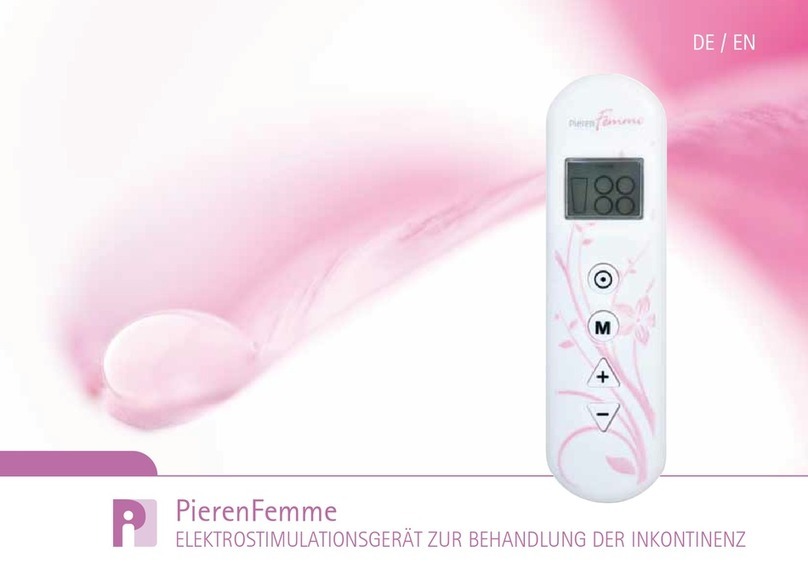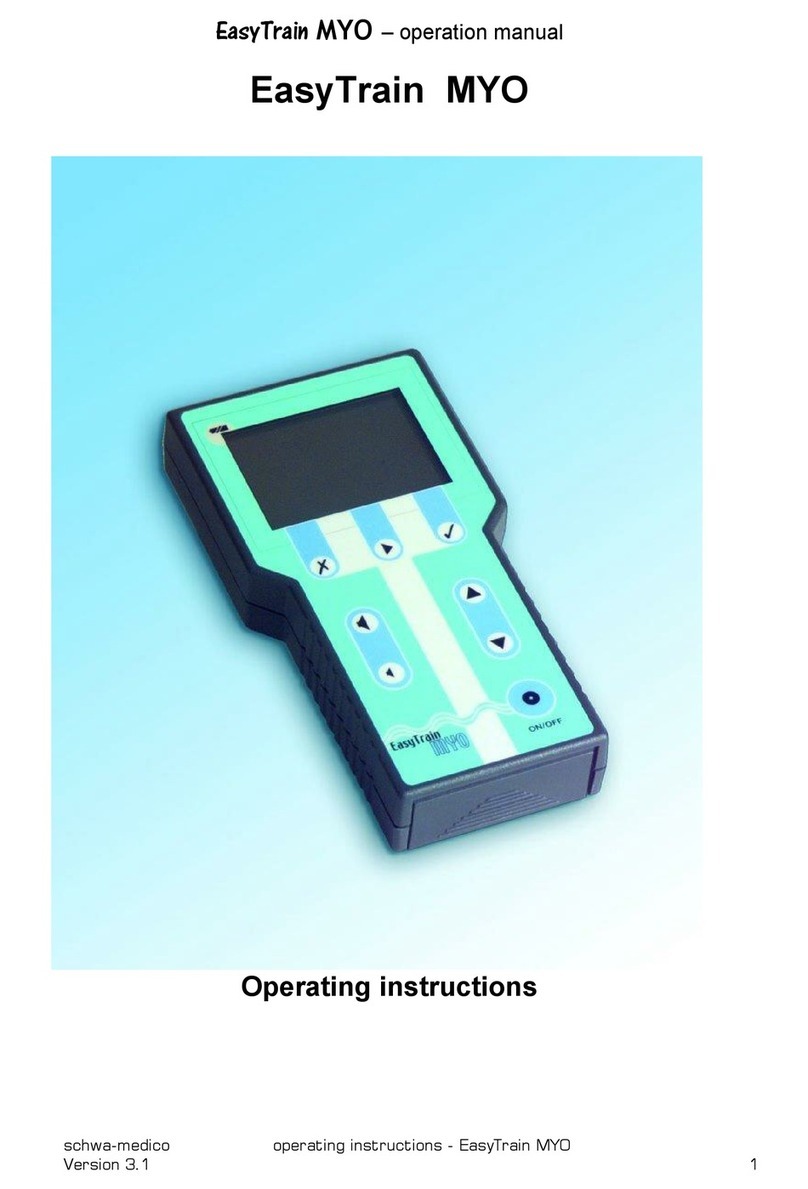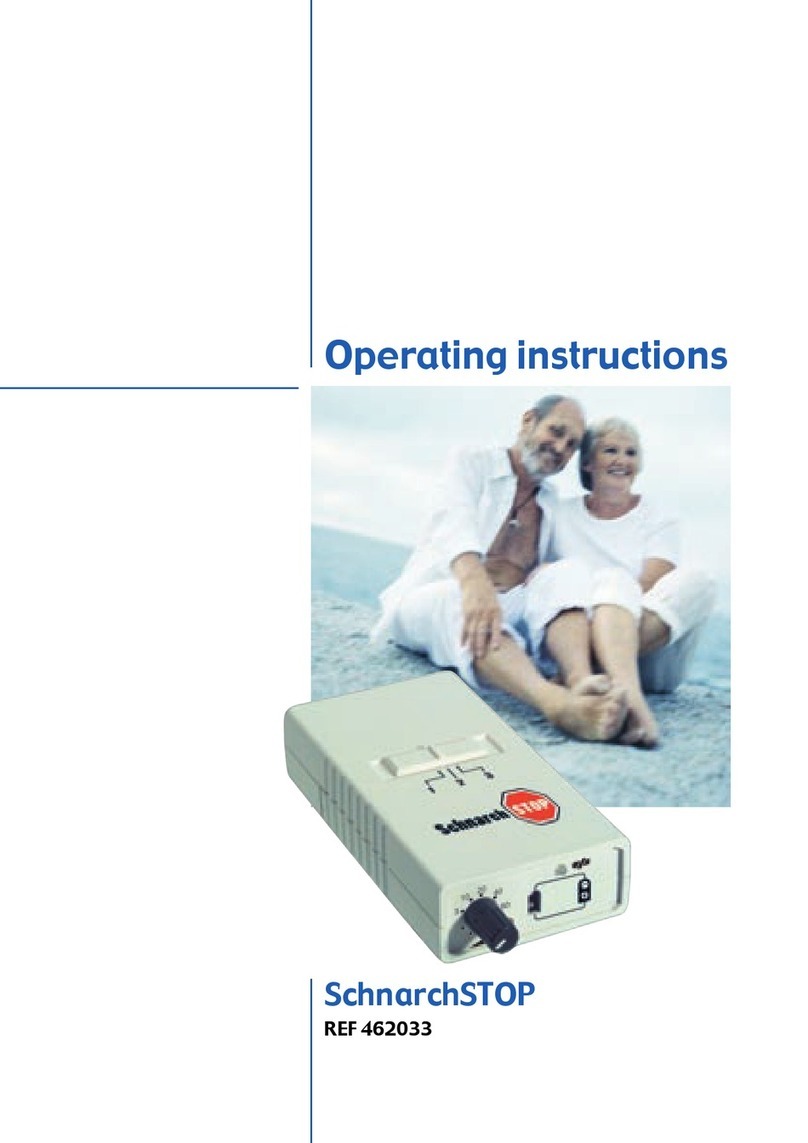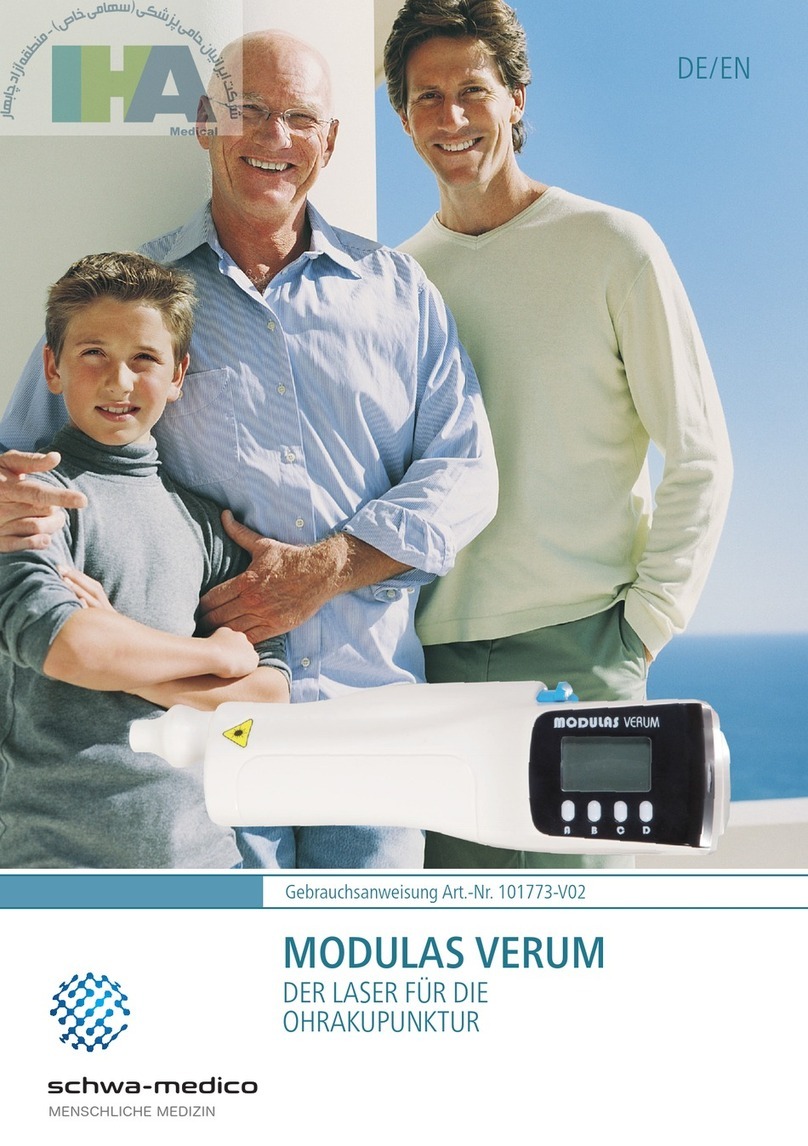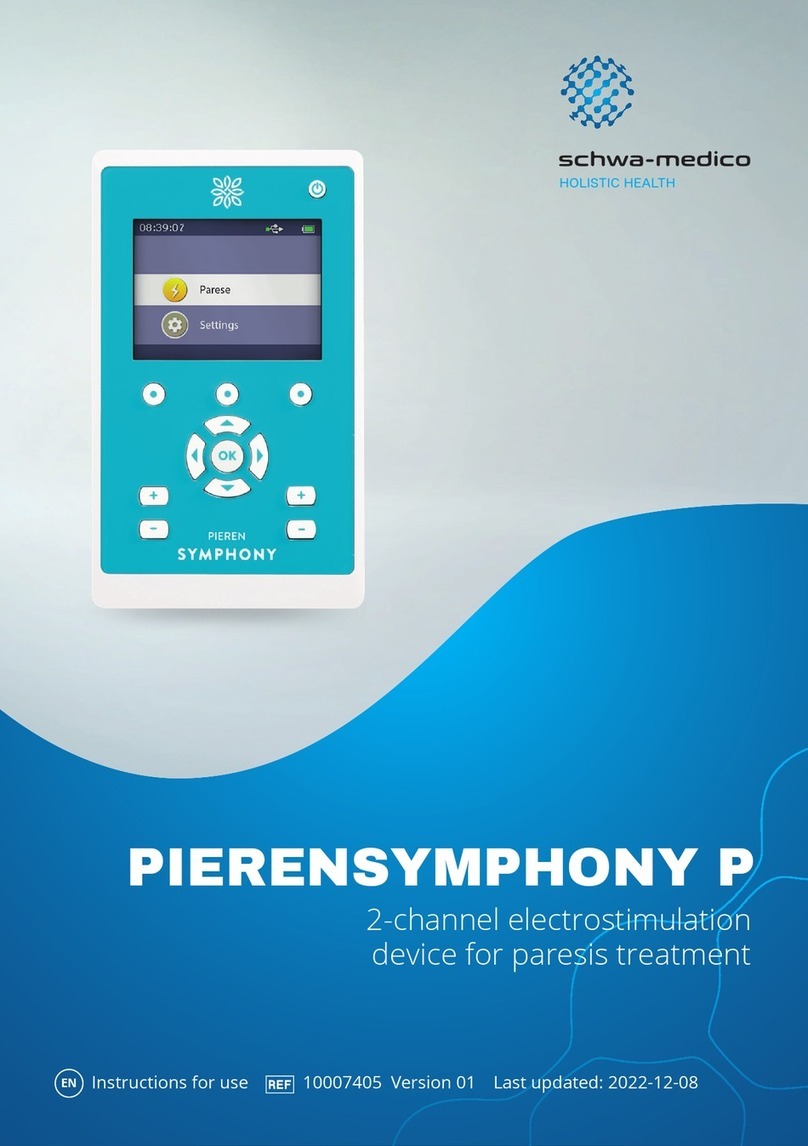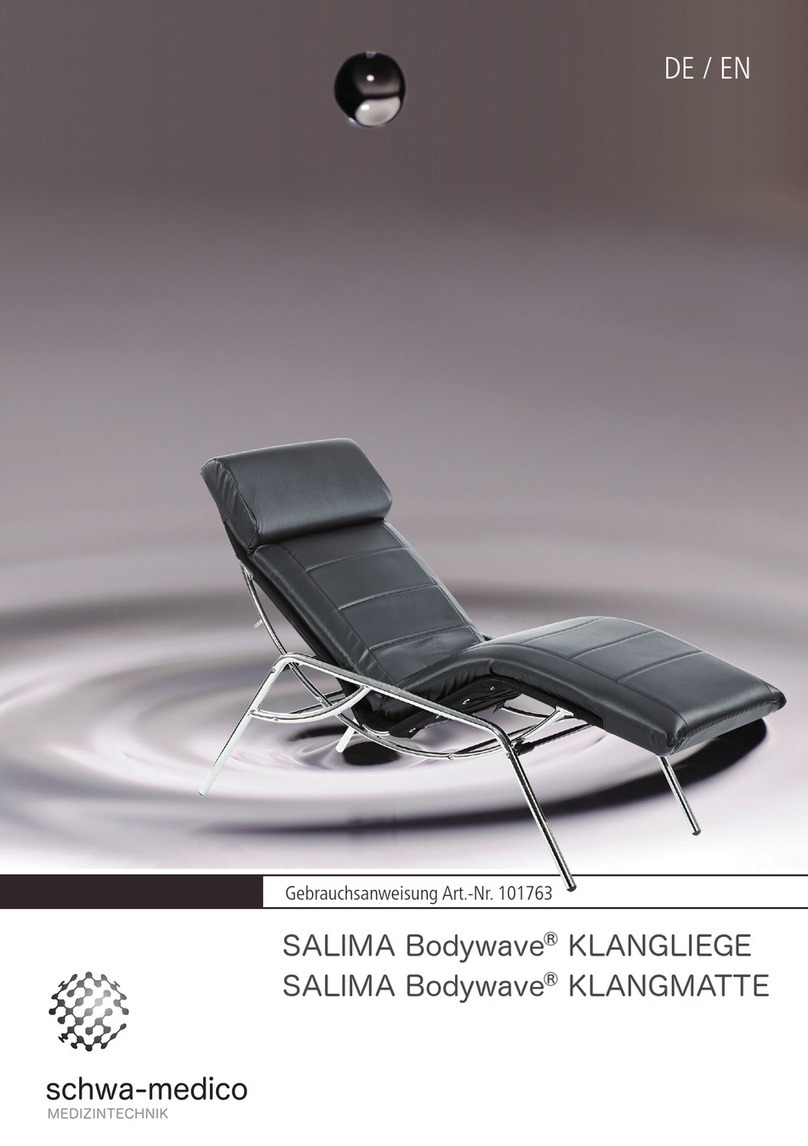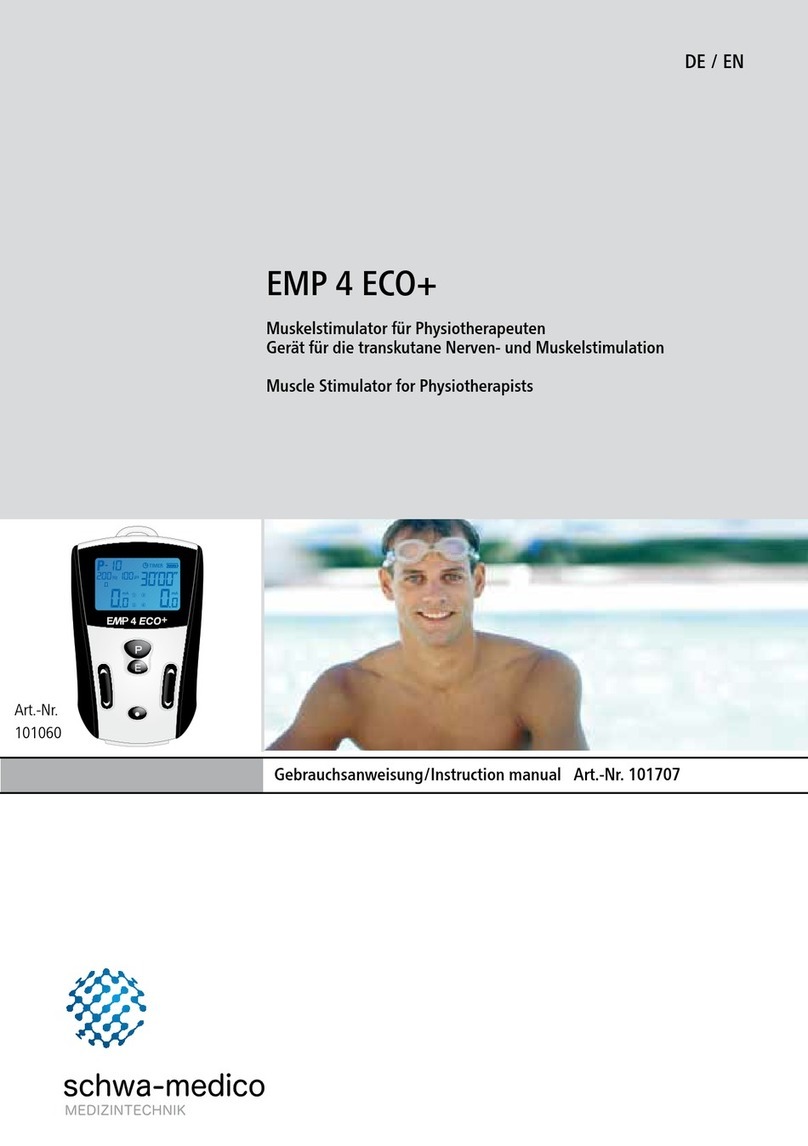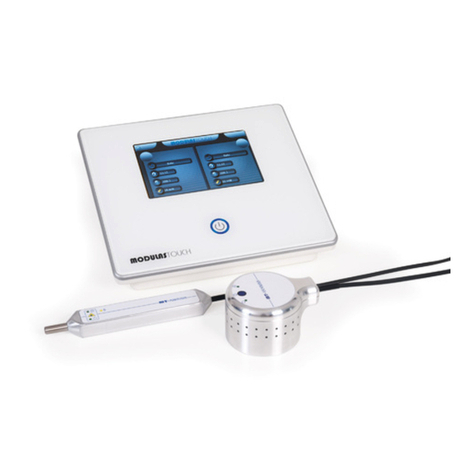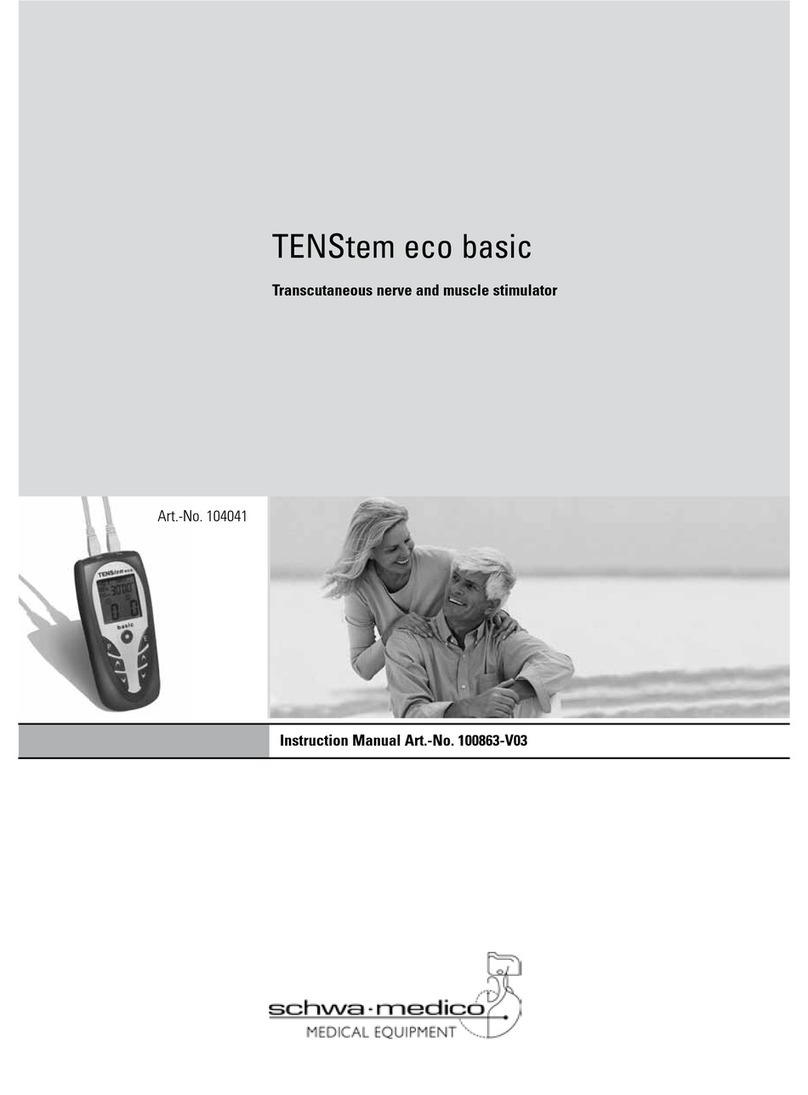1 Intended Use
TheAmpliMovemedicaldevicehasbeendesignedforthegenerationoftranscutaneous
stimulation of muscles and nerves with mid-frequency current on humans and may
not be used for any other purposes.
2 For safe use
Safety Instructions
Please read the operating instructions carefully before using the AmpliMove medical.
Health disorders may indicate serious disease. Please consult a physician and/or a
physiotherapist and consider the contra-indication and side-eects of the AmpliMove
medical.
To ensure safe use of the AmpliMove medical:
»Only use the AmpliMove medical with original accessories.
»Keep the AmpliMove medical away from water or other liquids.
»Do not use the AmpliMove medical if it is not working properly or if it has been
damaged in any way.
»The USB connector serves exclusively for software updates. Do not connect any
other device (e.g. printer) than a USB flash drive with a software update to the
USB connector of the AmpliMove medical device. Do not try to charge an external
appliance with the USB connector. Do not treat a patient with AmpliMove medical
when using its USB connector.
»Do not simultaneously connect a patient to AmpliMove medical and to.
»Do not operate the AmpliMove medical close to a high frequency surgical device,
another medical unit, a short wave or microwave unit or a mobile telephone system
as it can cause fluctuations in the output values of the electric current stimulation
unit.
»Avoid electrodes placement over the anterior chest wall. The electrodes should be
positioned in such ways that the current flow will not cross through the heart.
»The sizes of the electrodes are to be not less than 2 cm². If the applies current density
goes below 2 mA/cm², special attention on the patient is required.
»Only connect one patient to the AmpliMove medical.
»Do not use the AmpliMove medical during the simultaneous operation of other
machines, when driving or when asleep.
»Do not hold anything in the hand if using the stimulation sleeves STIMEX-TEX on
the upper extremities. Remain seated if using the stimulation sleeves STIMEX-TEX
on the lower extremities.
»Do not drop the AmpliMove medical, do not use it inappropriately or expose it to
extreme temperatures or high levels of humidity (not less than 10°C or more than 40
